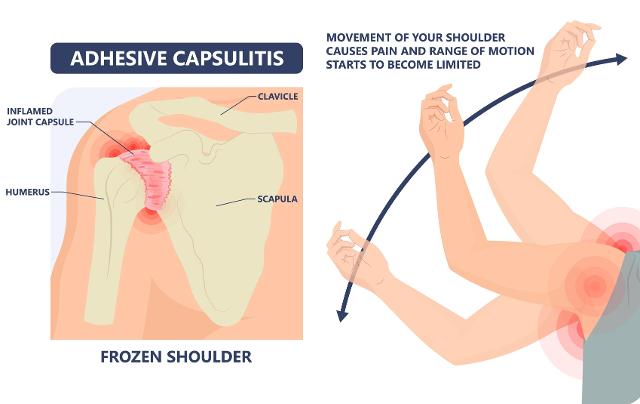 ALTON - The River Bend area had the first frost this week, but that has nothing to do with why some people are showing up to their doctor, complaining their shoulder seems frozen – as in, they can’t move it.
ALTON - The River Bend area had the first frost this week, but that has nothing to do with why some people are showing up to their doctor, complaining their shoulder seems frozen – as in, they can’t move it.
Robert Leb, MD, an orthopedic specialist who sees patients at OSF HealthCare, says a condition called frozen shoulder occurs in about 2% to 5% of the population. It’s more common among women than men and occurs most often between the ages of 40 and 60 years.
Get The Latest News!
Don't miss our top stories and need-to-know news everyday in your inbox.
Mysteriously, a frozen shoulder can come on slowly or sometimes without warning. Dr. Leb says people come to him reporting they were fine one day and then they lost range of motion in their shoulders.
“Lots of people tell me they felt like they slept on their shoulder wrong and then a few days later they’re like, ‘I can’t move it. I’m stuck.’ And then they come in to see us.”
The clinical name for frozen shoulder is adhesive capsulitis, and the condition can develop overnight. The lining (capsule) of the shoulder becomes inflamed and stiff, causing shooting pain with certain arm movements. Dr. Leb says eventually, the shoulder “freezes,” or becomes immobile, for a few months to a year or longer. Treatment can reduce recovery time.
There’s no one activity or reason this happens. Dr. Leb says there’s a strong connection to inflammation, which makes people more susceptible if they have certain conditions.
“So if you have diabetes, either Type 1 or Type 2, you’re at risk for frozen shoulder. If you have a history of cancer; cancer patients tend to develop inflammation, so patients who have had cancer are at higher risk for frozen shoulder.”
People who have thyroid conditions are also more prone to the condition and have a tougher time recovering. Anyone who has worn a sling or has been sedentary due to an accident or surgery can also develop frozen shoulder.
In less severe cases, anti-inflammatory medication such as Aleve, Motrin, or Advil can help. But Dr. Leb says people often need a little more intervention.

“The mother of all anti-inflammatory drugs are steroids, and I can either give that to you by mouth, so you can take pills, or I can actually inject it right into the shoulder and zap the inflammation that way.”
Physical therapy is often helpful in loosening the capsule of connective tissue, helping individuals regain range of motion and build strength over time, Dr. Leb says.
“The body shrinks it down, and then little by little, with the assistance of a qualified physical therapist or occupational therapist, you stretch that shoulder out and regain that motion.”
Dr. Leb says in a small number of cases, arthroscopic surgery might be needed to loosen the joint capsule.
“(That’s) where I put a little lighted telescope into the shoulder and I can actually use electrocautery and actually cut the tissues that are so scarred and open the shoulder that way. Or, in rare cases, I’ll even make an incision and go down into the shoulder capsule and very carefully release it.”
What’s important to remember, Dr. Leb says, is to seek treatment at the first sign something is not right. Help is available and most patients recover with nonsurgical therapies.
More like this:
